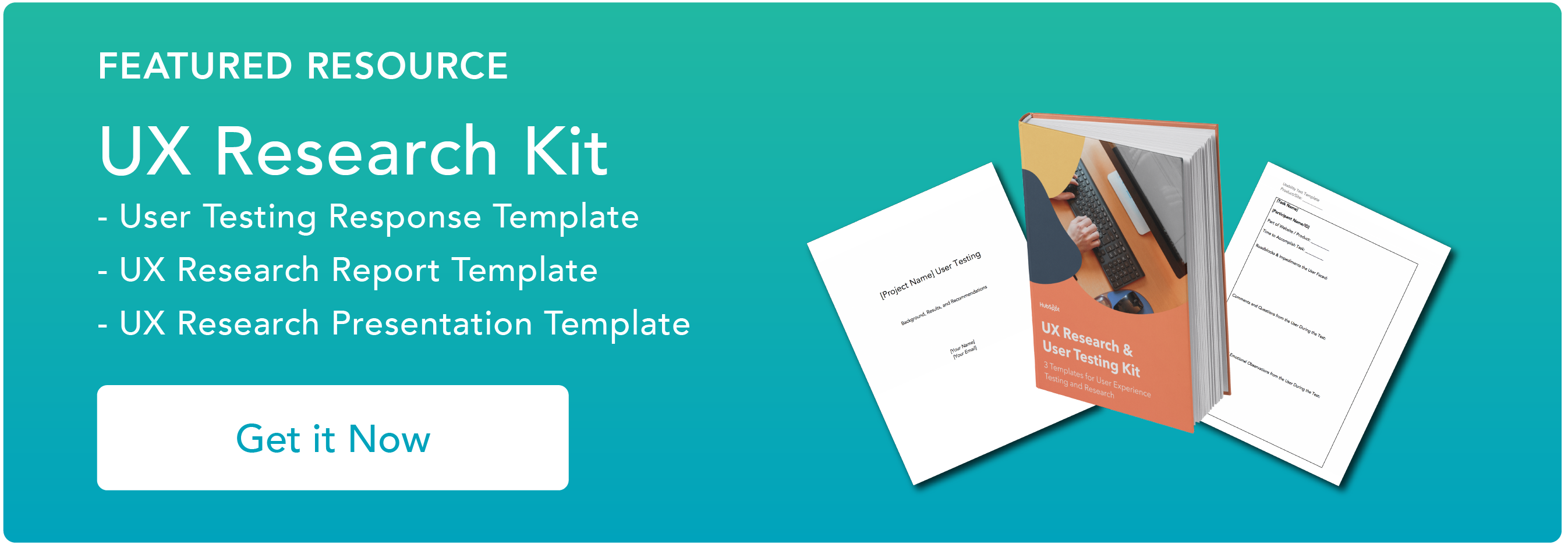Let’s discuss both of these organization methods in-depth, then compare their advantages and drawbacks to determine which method (or both) works best on your website.
You’ll see pagination widely used across many online businesses, ecommerce websites, and informational websites, like blogs. The HubSpot Website Blog is a basic example — articles are represented by featured image thumbnails, and divided by pages. Users may select a numbered link at the bottom to jump to a different archive page, or click an article thumbnail to view that article on a new page.

Infinite scroll has made a name for itself on social media websites like Facebook, Twitter, and Instagram. This technique is also widely used on image-heavy websites, like the stock photography website Unsplash:
In this example, the web page dynamically populates with new content as I scroll, and implements lazy loading to render new images when they appear onscreen. There’s no clicking necessary.
While both of these UX techniques are useful and widespread, they’re hardly interchangeable. In the next section, we’ll compare both methods, and see where and why they work best.
The strengths of pagination and infinite scrolling reveal why they’re so popular on certain sites. For example, pagination is widely-used in ecommerce because it better enables product searching and cataloging. Visitors to these sites are probably looking for a particular type of product (like a t-shirt or smoke detector) and only want to view products relevant to their query.
On the flip side, social media users typically aren’t seeking out anything specific — they want to be entertained and/or informed. In this case, infinite scroll is an excellent way to hook users into a stream of relevant content. You’ll see infinite scrolling on news websites and user-generated content sites for the same reason.
Let’s now break each down the effectiveness of infinite scroll and pagination across several important aspects of a website.
Engagement
Above all else, infinite scroll is designed to boost user engagement and keep viewers on the page for as long as possible. If visitors have no particular goal in mind, infinite scrolling will continue to roll out relevant content in a way that is efficient, digestible, and interruption-free.
On the other hand, pagination works better for getting users to their desired content as soon as possible. Pagination makes freeform exploration more time-consuming, as users must regularly click “next” and wait for new pages to load. However, lengthening your individual pages and optimizing load time limits this inconvenience.
Note that infinite scroll is not a perfect solution to slow loading either. The more visitors scroll, the most content needs to be loaded, slowing page performance. Make sure to reduce image sizing only to what’s required to lower the bandwidth used.
Ease of Use
If you paginate your content, you can trust that users will be familiar with your site’s layout. As long as your pages are well-organized, visitors should have no problem clicking between them.
Still, you should aim to reduce clicks as much as possible. Clicking links isn’t “hard” per se, but they certainly add up — people nowadays expect to do as little clicking as possible to get where they want.
If infinite scroll makes sense for your content type, your site’s ease of use will stand out. Simply scrolling to reveal more content comes naturally to most of us. It’s fast, easy, intuitive, and responsive — all of these contribute to a positive experience that visitors will appreciate, if not expect.
Additionally, the user-friendliness of infinite scroll shines through on touch screens. This feature was basically built for mobile devices because it minimizes button-pressing, an often frustrating task on phones.
Ease of Implementation
Virtually every website builder, CMS, and blogging platform defaults to pagination for content structuring. When building a site, you’ll probably pagination features out-of-the-box.
There’s no way around it — adding infinite scrolling to your site requires some additional legwork. While infinite scroll often makes things easier on the user end, it always makes things harder for the website publisher. This is because you can’t just slap the infinite scroll feature onto a paginated site expecting it to function perfectly.
Instead, you’ll likely need an add-on or a developer to implement infinite scrolling. If you’re transitioning an entire site from pages to infinite scroll, you’ll have to devote a lot of time restructuring your site’s organization as well.
However, don’t let the workload deter you. Consider placing infinite scroll on individual pages and testing engagement and performance. This way, you’ll determine whether it’s worth a full-scale transition for your site.
Navigation
As we’ve covered, pagination helps users who want specific content. For this reason, paginated sites are typically easier to navigate than infinite scrollers.
First, pages allow for easy filtering, indexing, and search. Imagine an aspiring chef browsing for a recipe on a cooking website. Pagination allows them to search “enchilada,” browse relevant recipe results, pick one that speaks to them, and bookmark the recipe page for later.
Also, pagination helps visitors feel more in-control while browsing. When searching for something, they can look at the number of pages left and quickly deduce how much content is left to view. When finished, they can rest assured they’ve considered all possible options.
By its very nature, infinite scroll doesn’t really allow any of this. There’s no end in sight for content, which becomes overwhelming. There’s also no easy way to bookmark a piece of content or location on the page. If a user leaves and then returns to the page, they’ll find themselves back at the top.
Another useful navigation feature often neglected by infinite scroll is the footer region. Users might instinctively check a footer for contact info, privacy policy, a careers page, or other important info.
Since pagination allows for pages that, well, end, the footer simply goes at the bottom of the page. With infinite scroll, this info must be relocated. Another point for pagination.
Visual Appeal
With the right stylistic approach, infinite scroll enhances not only for ease of use, but visuals too. This makes infinite scroll great for photo sharing websites, portfolios, and other sites that rely heavily on visuals. A stream of visually-appealing images is exactly what users want when looking for inspiration or getting a sense of your art, especially when paired with other effects like parallax scrolling.
There’s some science behind this reasoning as well. Humans can process a photo in mere tenths of a second. Our visually-adapted brains help us scan hundreds of complex images in seconds.
Not convinced? Check out the results of a search on Google versus Google Images. Notice which of these is paginated, and which isn’t.
SEO
Search engine optimization is a beast of a topic by itself, regardless of what UX strategy you take. Pagination and infinite scroll affect how content is laid out on your site, and therefore bring their own SEO challenges. Keep this in mind when forming your SEO plan.
Unfortunately, infinite scroll puts UX first and search engines second. By hiding much of your content on a page and loading it only when requested by scroll, infinite scroll might prevent proper indexing of your content by search engines. This lowers your site’s chances of ranking on results pages.
The problem is that, according to Google developer Martin Splitt, Google’s website crawlers do not typically scroll down pages, and only read what appears to viewers on initial page load. To get around this, Splitt explains, you can split newly loaded content into sections. Then, add “Read More” buttons that link to the next new section, so that bots can follow these links and index them like they would separate pages. This will take extra effort to implement and can disrupt UX, but many consider this approach a worthy tradeoff.
SEO is more straightforward when content is paginated — search engine bots are more likely to crawl entire pages and properly index your content. If you take steps to signal to search bots that content across pages is related, you’ll build up your rank.
However, remember to only use the number of pages necessary to clearly organize your content, as too many pages can lead to SEO issues. For each website, search engines set a limit on how much content is scanned and indexed. If your pagination system is too large, a search engine might exhaust its scanning on your navigation pages, and miss pages containing the content you want users to find.
To avoid this issue, don’t use more pages than you need — each page of content should provide significant value to visitors (and search engine bots). Also, try linking to your most important pages from your homepage. This reduces the number of clicks to reach your best content and ensures that bots will index what you want.
To Scroll, or Not to Scroll
At this point, we hope it’s clear which UX approach will benefit your website the most. Even so, don’t shy away from testing both of these methods to get data-driven insights.
Ultimately, your goal isn’t to design the flashiest front page or copy what the most popular sites are doing. It’s to organize and present your content in a way that suits your users’ needs. If done right, your visitors shouldn’t have to think about how to find the right content — they just will.
User Experience
.png?width=112&height=112&name=Image%20Hackathon%20%E2%80%93%20Square%20(10).png)




![How to become a UX designer, a step-by-step guide [expert tips]](https://53.fs1.hubspotusercontent-na1.net/hubfs/53/become-a-ux-designer-1-20240731-321437.webp)


![How to Add a Parallax Scrolling Effect to Your Website [Examples]](https://53.fs1.hubspotusercontent-na1.net/hubfs/53/scroll-Aug-11-2023-05-24-08-8793-PM.png)

![20 UX Design Examples Hand-Picked by Experts [With Analysis]](https://53.fs1.hubspotusercontent-na1.net/hubfs/53/ux-design-examples-1-20250404-8425368.webp)
